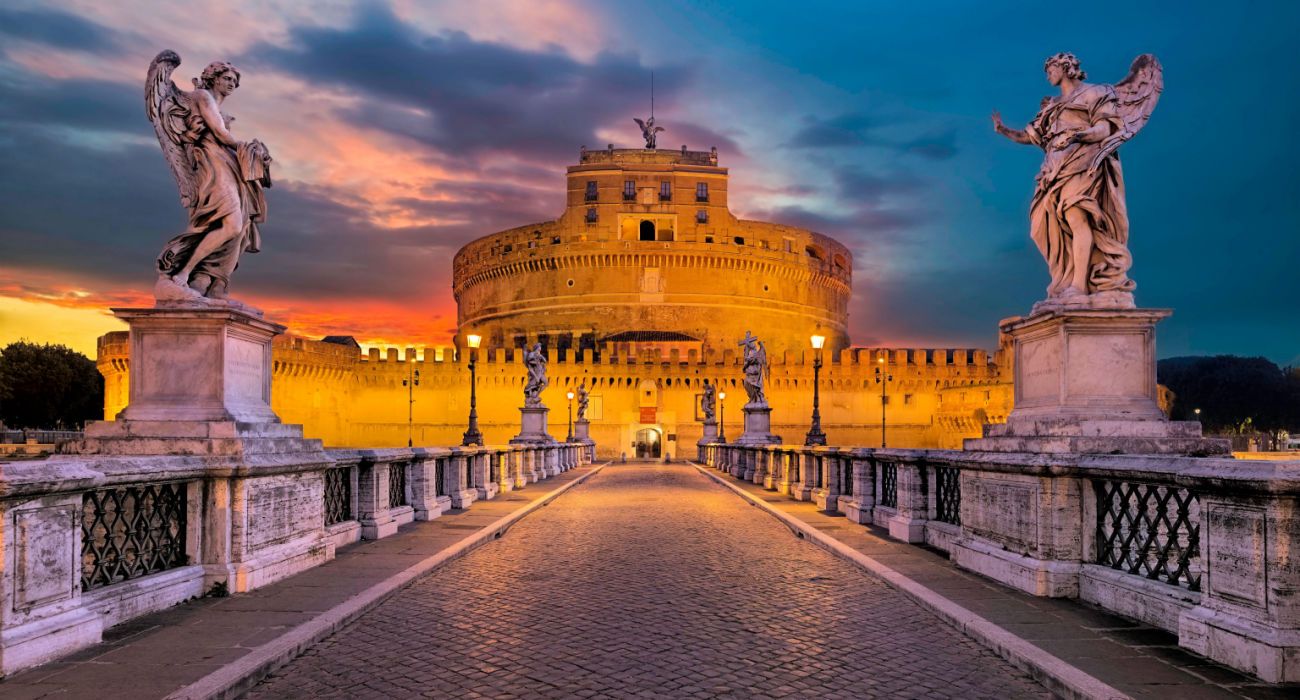Quick Links
Hadrian is one of the most famous of the ancient Roman Emperors. He was responsible for building some of the most famous Roman ruins still around today - like the famous Hadrian's Wall in the North of England and his once-opulent villa just out of Rome (Hadrian didn't like his palace in Rome). Another of the notable ruins built by Hadrian is the Mausoleum of Hadrian (also called Castel Sant'Angelo), which is still standing in Rome.
The most famous mausoleums around the world today are probably the Great Pyramids of Giza (timeless wonders) and the architecturally beautiful Taj Mahal in India. Next time in Rome, put this great Roman mausoleum on the bucket list.
Mausoleum Of Hadrian: A Great Mausoleum For A Great Emperor
The Mausoleum of Hadrian or Castel Sant'Angelo is one of the most impressive ancient Roman ruins in Rome. It is a towering cylindrical building and was built by Emperor Hadrian as a mausoleum for both himself and his family. For a time, it was the tallest building in Rome.
- Built: 134-139 AD
It was built on the right bank of the River Tiber and was constructed between AD 134 and 139.
The mausoleum once had a garden top and golden quadriga. Hadrian's ashes along with his wife's ashes and his first adopted son's ashes were placed there. Other Roman Emperor's ashes were also placed there. It is thought their ashes were put in urns places in a room called the Treasury Room.
It is believed that the urns and ashes were scattered by the Visigoths when they stormed and sacked Rome in 410 (it was also sacked again in 537).
Later Used As A Fortress & Papal Residence
Many of the Roman ruins to survive to the present day did so by finding other uses during the centuries (e.g., the Pantheon in Rome is perhaps the best preserved Roman temple, which was converted into a Catholic Church). The Mausoleum of Hadrian was no exception. Long after the death of Hadrian, it was used by the popes as a fortress and a castle.
It became associated with the archangel Michael in 590 when Pope Gregory I is said to have seen archangel Michael sheathing his sword on top of the mausoleum, signaling an end to an epidemic. Later on, another pope - Pope Pius II, built a chapel where Michael was said to have appeared. The Italian name, Castel Sant’Angelo, means "Castle of the Holy Angel."
As a fortress (and Papal residence), it was instrumental in protecting Rome during the Middle Ages. It was first made into a defensive structure by Roman Emperor Aurelian. The Vatican ended up being outside the city walls and was difficult to defend, so the former mausoleum was connected with the Vatican by a tunnel in 1722. Later it was reconstructed into a fortress by the popes starting in the 14th century.
The bronze statue of Saint Michael dates from 1753 and was created by the Flemish sculptor Peter Anton von Veschaffelt. An older marble statue of Saint Michael can be seen in the open court in the castle's interior.
It is a rare example of a Roman monument that has managed to stand the test of time for almost 2,000 years.
Planning A Visit To Hadrian's Mausoleum / Castel Sant'Angelo Today
The castle was decommissioned in 1901, and today it is a museum and is open to the public. Today the museum also houses frescoes, sculptures, artwork, and more from Roman history. Unfortunately, many of the original contents and decorations of the mausoleum were lost when it was converted into a military fortress in 401.
- Opening Hours: 9.00 am to 7.30 pm
- Days Open: Every Day (Except January 1st, May 1st, and December 25th)
- Admission Fee: 17.50 Euros ($18.50)
No visit to Rome and a tour of the many ancient ruins in the Eternal City is complete without visiting the eye-catching Castel Sant'Angelo.
The Six Stories Of Castel Sant'Angelo:
- Ground floor: Has a display of medieval weapons
- 1st floor: See the mausoleum with the original tombs of emperor Hadrian
- 2nd floor: The prison (it was used as a prison in the Medieval period)
- 3rd floor: See historic furniture, ceramics, weapons, paintings, and other Renaissance objects.
- 4th floor: See the rooms for popes in case of an attack on the Vatican
- 5th floor: Roof terrace with a bronze statue of archangel Michael (also has a stunning view of Rome)
Note that for American readers, the "Ground Floor" is the first floor, and every other level can be numbered up by one (e.g., 4th floor is the 5th floor).

